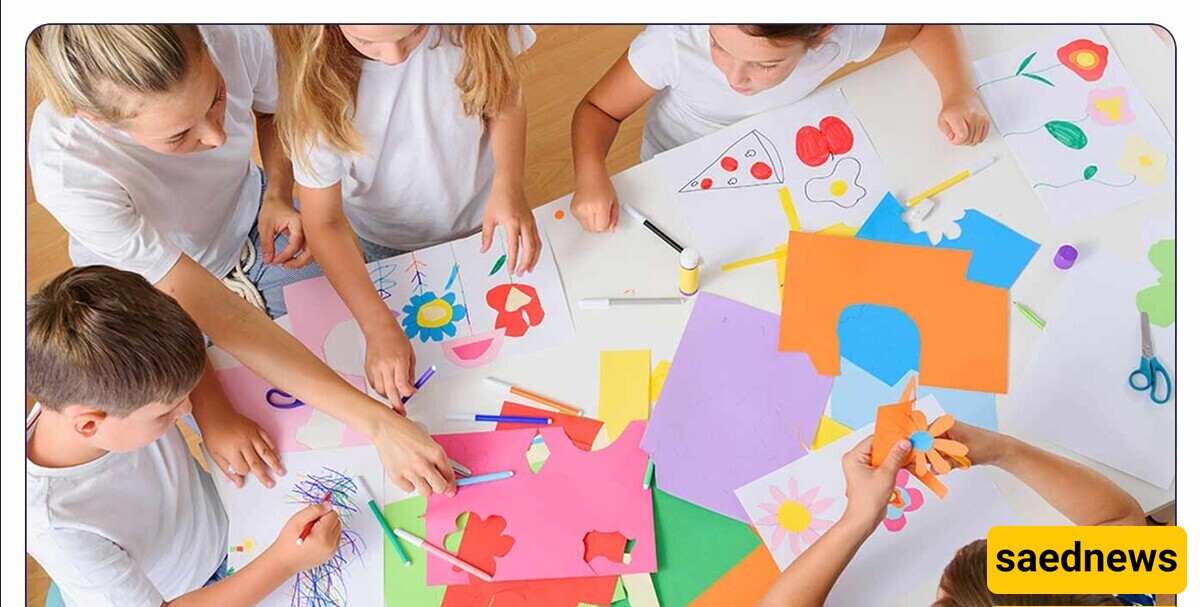The most important duty of parents is to understand how to interact appropriately with their child's personality. Whether introverted, extroverted, or ambivert, each child requires a unique approach to upbringing. There are many strategies to enhance children's creativity, which we will explore in this article.

If we define creativity, it means the ability to create or find solutions to problems. Children's creativity can be described as their ability to generate new and unique ideas.
Creativity plays a crucial role in children's development because it can be their most significant personal and individual trait in the future. A creative child has skills beyond innovation, leading to a more fulfilling and successful life. Enhancing creativity impacts mental and emotional health and even improves memory. It strengthens children's connection with the world and encourages learning and interaction.
A creative child often has a free mind, is less stressed, and immerses themselves in ideas, helping them ignore negative aspects of their environment. In simple terms, creativity paves the way for success in later stages of life.

Children show signs of creativity as early as age two, but the most significant development happens between ages 4 to 10. Many psychologists consider this period crucial for nurturing creativity. The peak of creativity typically occurs between 4 and 5 years old.
Raising a creative child is challenging, requiring patience and the ability to handle their unique behaviors. Parents who want a creative child must first create an environment that fosters creativity and then develop the patience to support them.

You can recognize creativity in children through simple observations, such as their drawings, comments, and reactions to different situations. Some key signs include:
Expressing opinions and suggestions fearlessly.
Coming up with unique solutions not seen in other children.
Excelling in artistic activities with enthusiasm.
Offering multiple solutions for a single problem.
Having a good sense of humor and making others laugh.
Wanting to modify stories or books.
Asking unusual and persistent questions.
Expressing thoughts through drawings.
Questioning and not easily accepting others' opinions.
Standing out from their peers with unique characteristics.
Family plays the most critical role in enhancing children's creativity. Proper guidance of their imagination fosters talent development. The key to encouraging creativity is boosting children's confidence. The more self-assured they are, the more courage they will have to explore different ideas.
Encouraging divergent thinking (generating multiple solutions to a problem) is crucial for creative development. Here are eight effective ways:
Introduce children to the colorful world of art.
Ask open-ended questions.
Teach them imaginative play.
Provide opportunities for movement and exploration.
Read poetry and books to them.
Take them on trips and picnics.
Avoid rigid schedules—allow spontaneous activities.
Several factors influence creativity in children, including:
Family’s socioeconomic status.
Parenting style.
The number of siblings.
Educational environment (kindergarten, school).
Type of games children play.
Quality of their play environment.
Do not make them afraid of failure.
Be cautious with praise—excessive or misplaced praise can hinder independence.
Give them enough space to play freely.
Be a creative role model for them.
Offer choices in activities, encouraging them to do things their own way.
Avoid constant monitoring and control.
Allow them to experiment with different activities.
Observe their play to understand their interests.
Limit screen time and encourage hands-on activities.
Music significantly boosts creativity by stimulating artistic skills and fostering joy. When children sing, they express their inner talents. Activities like visiting museums, libraries, and historical sites also enhance imagination.
Over-scheduling their activities.
Excessive homework.
Unrealistic perfectionism—expecting flawless performance stifles creativity.
One of the best ways to enhance creativity is engaging children in arts and crafts. When they use their hands to create something new, they engage their mind and body, preparing them for future innovation.
Creativity is not an inherent trait—it can be developed through education and the right environment. By fostering creativity, parents can set the foundation for their child's success and well-being in life.

